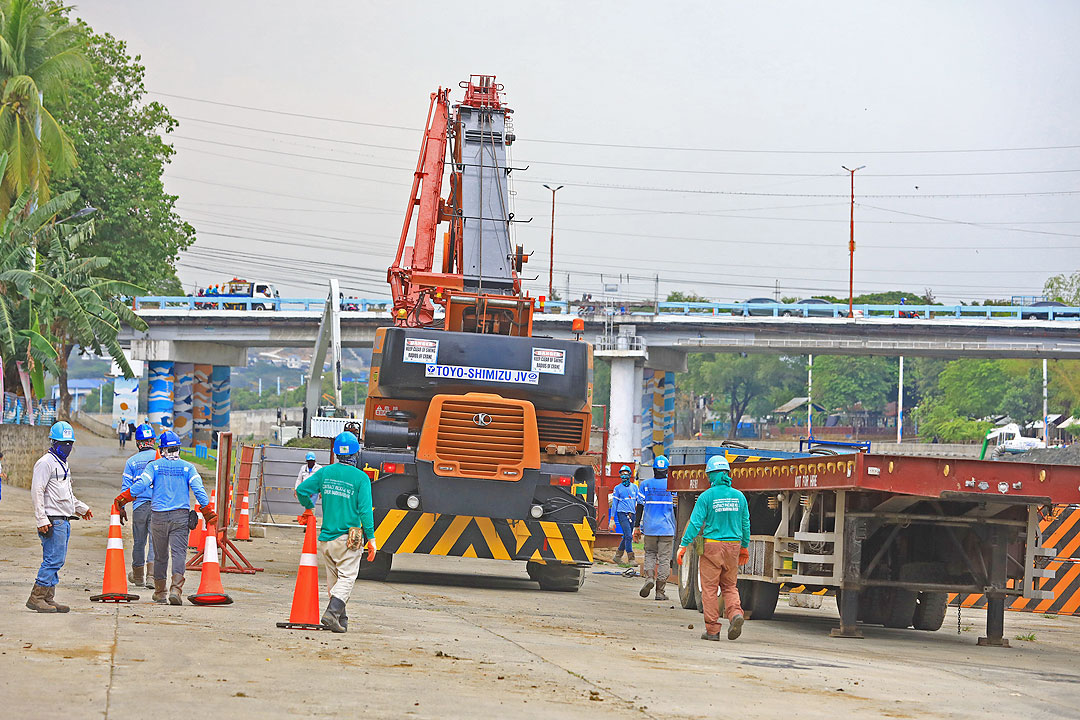
By Luisa Maria Jacinta C.Jocson, Reporter
INFRASTRUCTURE SPENDING dropped by 16.5% in March, as some releases for the Defense and Education departments are expected in the second and third quarters, the Department of Budget and Management (DBM) said.
In its National Government (NG) disbursement report, the DBM said expenditures for infrastructure and other capital outlays fell to P83.7 billion in March from P100.2 billion in the same month a year ago.
However, the March figure was 33.5% higher than the P62.7 billion spent in February.
“This was mainly attributed to the timing of releases for the Revised Armed Forces of the Philippines Modernization Program (RAFPMP) of the Department of National Defense (DND), as well as payments for completed capital outlay projects of the Department of Education (DepEd),” the DBM said in a press release.
The DBM said that most of the releases under the RAFPMP were already taken up in January and the succeeding releases are mostly programmed in the second to third quarters.
“In the case of the DepEd, big-ticket payables for their capital outlay projects are expected starting this third quarter,” it added.
In the first quarter, infrastructure spending was up by 7.3% to P196.7 billion from P183.2 billion a year ago.
Infrastructure spending in the first quarter was also a tad higher than the P195.8-billion program for the period.
The DBM attributed the higher spending to the implementation of road infrastructure projects of the Department of Public Works and Highways (DPWH) and rail transport foreign-assisted projects of the Department of Transportation (DoTr).
ING Bank N.V. Manila Senior Economist Nicholas Antonio T. Mapa said that the slower infrastructure spending in March could reflect challenges for the government in sustaining support for the economy.
“For first-quarter growth numbers, overall construction delivered economic expansion; however, public construction largely lagged the strength of private sector outlays,” he said in an e-mail.
The Philippine economy grew by 6.4% in the first quarter, slower than the 8% in the same quarter a year ago.
Construction expanded by 10.8% in the first quarter, easing from the 13.1% growth a year ago. It contributed 0.59 percentage point to gross domestic product (GDP) in the first quarter, lower than the 0.69 point in the same quarter a year ago.
Rizal Commercial Banking Corp. Chief Economist Michael L. Ricafort said elevated inflation also dented infrastructure spending as prices of construction materials rose.
“Higher prices and interest rates that increased borrowing costs for the government and also increased the overall costs of various infrastructure projects could have also somewhat slowed down the growth of infrastructure projects in the first quarter,” he said in a Viber message.
Headline inflation averaged 8.3% in the first quarter, still well above the central bank’s 2-4% target and revised 5.5% full-year forecast.
In the months ahead, Mr. Mapa said that the government should continue its aggressive infrastructure push.
“Public construction can help boost growth both in the short term, by way of job creation and purchase of raw materials, and in the medium term via improved production capability and or delivering efficiency gains,” he added.
Easing inflation would support infrastructure growth in the next months, Mr. Ricafort said.
“Infrastructure would remain a bright spot and a major growth driver for the Philippine economy as seen in recent years especially since the pandemic started in 2020,” he said.
This year, the government plans to spend 5.3% of GDP on infrastructure, equivalent to P1.29 trillion.
Infrastructure spending declines by 16.5% in March
Source: Bantay Radio
0 Comments